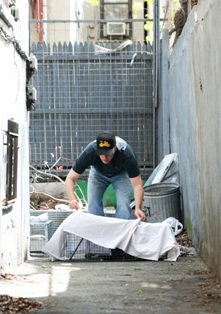A group of innovative animal protectionists developed a process called Trap-Neuter-Return, most commonly referred to as TNR among those in the field, to provide a better solution to the incessant killing that was the non-working “solution” for feral cats.
TNR consists of three steps:
1. Trap: the individuals involved humanely trap all of the cats in a colony. They use traps that do not hurt…






